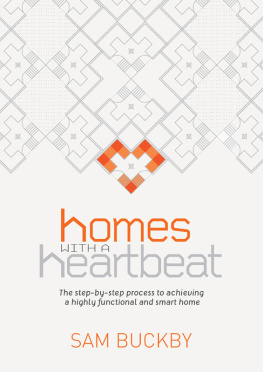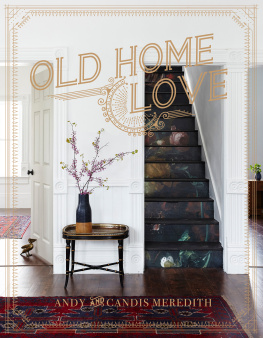MOBILE HOME
MOBILE HOME
A MEMOIR IN ESSAYS
MEGAN HARLAN
ASSOCIATION OF WRITERS & WRITING PROGRAMS AWARD FOR CREATIVE NONFICTION

Published by the University of Georgia Press
Athens, Georgia 30602
www.ugapress.org
2020 by Megan Harlan
All rights reserved
Designed by Kaelin Chappell Broaddus
Set in 10/14 Bodoni Twelve ITC by Kaelin Chappell Broaddus
Most University of Georgia Press titles are available from popular e-book vendors.
Printed digitally
Library of Congress Cataloging-in-Publication Data
Names: Harlan, Megan, author.
Title: Mobile home : a memoir in essays / Megan Harlan.
Description: Athens : The University of Georgia Press, 2020. | Series: Association of writers & writing programs award for creative nonfiction | Includes bibliographical references.
Identifiers: LCCN 2020007543 | ISBN 9780820357928 (paperback) | ISBN 9780820357935 (ebook)
Subjects: LCSH : Harlan, MeganHomes and haunts. | Authors, American21st centuryBiography.
Classification: LCC PS 3608. A 7438 Z 46 2020 | DDC 811/.6 [ B ]dc23
LC record available at https://lccn.loc.gov/2020007543
FOR MY FAMILY
AND OTHER
NOMADS
CONTENTS
ACKNOWLEDGMENTS
Id like to acknowledge that these essays were originally published in the following literary journals:
AGNI: Spider Season
Arts & Letters: Mobile Home
The Cincinnati Review: Several Londons, 1977
Colorado Review: A History of Nomadism
Hotel Amerika: Likelers
The Smart Set: Setting Stonehenge
Superstition Review: Motel Childhood
Under the Sun: What Is Vanishing
I am deeply grateful to the literary magazine editors who published these essays and edited them so beautifully, especially Sven Birkerts, Jennifer Alise Drew, and Bill Pierce; Stephanie GSchwind; Kristen Iversen and Lisa Ampleman; David Lazar; the editors of Under the Sun, as headed by Heidemarie Weidner; Patricia Colleen Murphy; and Melinda Lewis. My great thanks to Robert Atwan for citing Spider Season and Mobile Home among the Notable Essays and Literary Nonfiction of the year in Best American Essays (2018 and 2019 editions, respectively): it is thrilling to be recognized in an anthology I read and admire every year. Many heartfelt thanks to Joni Tevis, who selected Mobile Home as winner of the Susan Atefat Prize for Creative Nonfiction, and to Laura Newbern, Peter Selgin, and the Arts & Letters editors: that great honor helped me envision the collection as a book. Enormous thanks to Ronald Spatz, editor of Alaska Quarterly Review, who accepted (via a memorably rare from-Alaska phone call one Sunday morning) a tricky early essay I wrote about my father: that publication inspired so much. Im eternally grateful to Debra Monroe for selecting this manuscript for the AWP Prize in Creative Nonfiction: its a seismic honor and beyond-words meaningful to me. Its been my privilege and a true pleasure to work with the team at the University of Georgia Press, including Walter Biggins, Jon Davies, David Des Jardines, Thomas Roche, Sarah C. Smith, and Beth Snead; my great thanks for all their fine, insightful work as they brought this book into the world. So many wonderful and thoughtful people have supported and helped shape this book, but I could not have written it without the candor, memory dives, and excellent sense of humor of my mother, Sherry Harlanwhose wit, caring, and generosity inspire me every day. Love and special thanks to my brother, Evan Harlan, a talented architect and huge-hearted person, for talking architecture with meand always nudging me in the right direction. Finally, all my love and gratitude to Liam, my brilliant, kind, and joyful fort-builder, and to Matthew Culligan, always my first reader (really listener), who makes everything he brings his mind and heart to more fun, joyous, and alive.
MOBILE HOME
A HISTORY OF NOMADISM
It is not down in any map;
true places never are.
HERMAN MELVILLE ,
Moby-Dick
1. Black Tent
In the deserts near my home in Dhahran, Saudi Arabia, Bedouins pitched their black tents. This was the late 1970s, but the same style tent once housed Abraham and Moses, according to the Old Testament, and pre-dates those books by millennia. Out in the sands, Id scan the horizon for the tents low-slung pentagram shapes, for the camels and cooking fires. My dad told me Bedouins are the most gracious of peoples, that hospitality is the cornerstone of nomadism. He said desert nomads will starve to give a visitoreven a visiting enemya meal. This was what interested him: insights into the varied social universes intrinsic to his career managing international contracts. But it was the black tents that repeated in my seven- and eight-year-old mind like a favorite song.
Their stark premise exhilarated me, then as now: a primary residence that is portable. The tent-home is as intimate and nimble as room-sized clothing. It untethers the domestic world from address, lightens it to a freedom of movement. Its inhabitants must plant roots someplace other than a patch of earth, a hometowns fixed proximities, instead reaching ambient, skyward. Maybe a nomadic child grows like an epiphyte, all nutrients critical for development absorbed from the traveled-through atmospheresfabrics of light, language, scent, and sound, their inherited and intuited meanings.
2. Synaptic
I have a history of nomadism. Growing up, I moved on average once a year, lived in seventeen homes across four continentsvery particular corners of North America, Asia, Europe, and South Americaby the time I graduated from high school at age seventeen. Like traditional pastoral nomads, my sense of home was as temporary as a campsite. But unlike them, my familys campsites, our homes, were never revisited. No seasonal structure directed my familys movements; no terrain was deemed oursour familys, our ancestorsto revolve around with grazing animals, whether goats or camels or sheep; no regular orbit of travel arranged the world into a geographic pattern my family might call, on the grandest scale, a home.
Yet nomads we were, twentieth-century people from the developed world moving far and wide to develop the rest of it. What directed our travel were my fathers white-collar jobs on massive engineering and building projectsthe very construction that halts traditional ways of living, spreads postmodern clockworks, technologies, transit systems. The culture we brought miniaturized weeks of overland travel into five-hour flights and fused intricate synaptic cross-stitchings of cityscapes, histories, cuisines, topographies, religions, artworks, and languagesall as wed found them in our own constantly shifting backyard.
My familys version of nomadism continues an original American tradition: to chase that setting sun. Going back just as far as America, nearly all my ancestors were typical colonial-era religious refugees who had to get out of the Old Country in a hurry. Three to four hundred years ago, these people boarded wooden ships from Atlantic Europe to North America and landed in a history lesson of the coloniesPlymouth, New Amsterdam, Massachusetts Bay Colony, Philadelphia, and dozens more. Then their descendants surged through one frontier after another, inexorably west, until all my great-grandparents were born west of the Mississippi; all my grandparents raised their kids in Washington, Oregon, or California. And my parents, not to be stymied by the continents Pacific coastline, leaped up like a sneaker wave and landed in Saudi Arabia.
Next page








